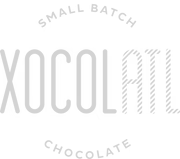We source high quality cacao grown in healthy forests using sustainable farming practices.
We trade directly with:
Nicaragua, Matagalpa


More widely known for its coffee production, the central highlands of Nicaragua is also home to cacao producers like Gifford Laube, to whom we were introduced by friends in the craft chocolate world. A cacao farmer himself working to preserve an ancient cacao varietal on his own farm, Giff also created Cacao Bisiesto, a direct trade enterprise that purchases wet cacao from his neighboring farmers at well above market rates, then takes on the additional work of the post harvest production to achieve a consistently well fermented and dried cacao that can then be accessed by the international market. Giff is constantly working on new projects on his lands and within the NGO world supporting other Latin American coffee and cacao producers and we’re excited to continue working with him and his neighboring farmers to see what’s next. A trip to visit him includes time on his land, in town and with his beautiful family.
FLAVOR PROFILE: Lightly floral, mild cocoa, black tea and dried dates.
Peru, San Martin de Pangoa

We were first introduced to Cooperativa Agraria Cafetalera Pangoa (CAC Pangoa) by our friends at Coop Coffee & Cafe Campesino, who’ve been purchasing coffee directly from this cooperative of 700+ coffee farmers for more than 20 years. We were told that a smaller number of these farmers also grow cacao to diversify their crop portfolio in an effort to mitigate against the effects of climate change on their coffee yields. We were intrigued. Traveling with conservation organization Conservation Cacao and other friends in the chocolate world, we’ve been able to work with the cooperative directly, encouraging them to continue producing their heirloom native cacao and paying them a quality premium that is well above fair-trade pricing for the extra steps they take to work with us. With a visit almost every year, it’s a real treat to be hosted by CAC Pangoa and walk the steep lands where coffee, cacao, oranges, starfruit and bananas grow tangled in the jungle. We were thrilled to win two consecutive Good Food Awards for bars made with beans from CAC Pangoa. Learn more about the farmers we work with and the woman-run cooperative that they’ve formed (and the story behind chocolate) at Setting the Bar: A Craft Origin Story. These beans are certified organic.
FLAVOR PROFILE: Dark, jammy berries, hibiscus, cinnamon.
Tanzania, Kilombero Valley

Kokoa Kamili is a social enterprise created to ensure cacao farmers in Tanzania are paid fairly for their work in a region of the world where that is usually not the case and to elevate the quality and reputation of Tanzanian cacao internationally. Rather than purchasing the cacao beans after the farmers have fermented and dried them, Kokoa Kamili sets up multiple collection points where farmers can deliver their wet beans immediately after harvesting them and pays the farmers 24% above local rates. Kokoa Kamili then employs local staff to centrally ferment, dry, sort and bag the beans for export, leaving the farmers with more time to tend to their farms and more money in their pockets for their families, allowing the organization to pursue its goal “to bring real economic development to rural Tanzanian farmers.” We first connected with Kokoa Kamili to use their beans when Xocolatl first started and we’re so happy to have them back in our regular line up of chocolate! These beans are certified organic.
FLAVOR NOTES: Tart red berries, tropical fruits, caramel.
Uganda, Semuliki Forest

Our newest cacao origin is on the far western border of Uganda, where cacao is grown by smallholdings farmers, usually on lands less than 3 acres and usually by women. More than 1000 families work with Latitude Trade Company, a social enterprise founded in 2016 that invests in area farmers, pays above market prices (always in cash at the time of collection which helps cash flow for these families) and works to connect these smallholdings farmers with bean-to-bar chocolate makers like ourselves who require transparency and traceability in their supply chains. With partners like Latitude Trade Company, whose mission is to “to sustainably increase incomes and reduce risk for farm households in regions where [they] operate”, we know our newest origin adds value to the cacao sector in Africa.
FLAVOR PROFILE: Classic dark chocolate, brown sugar & spice notes like cinnamon & cardamom.



















